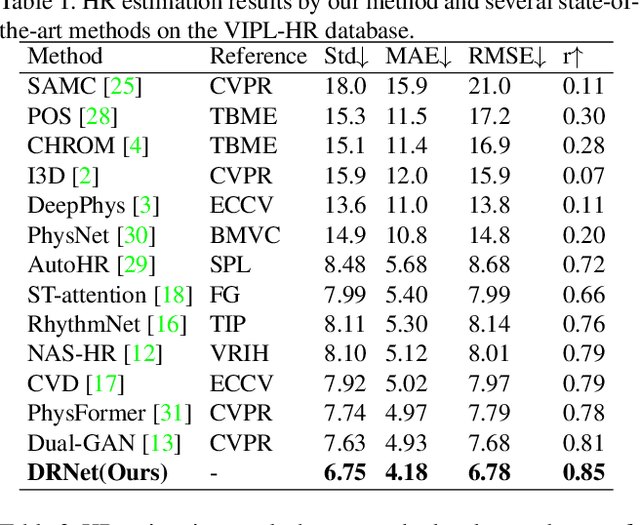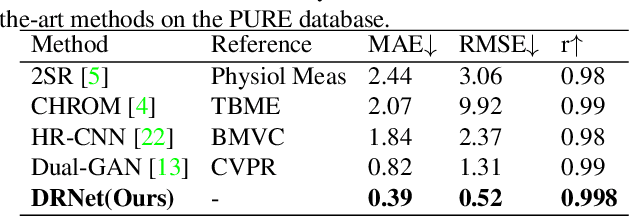DRNet: Decomposition and Reconstruction Network for Remote Physiological Measurement
Paper and Code
Jun 20, 2022



Remote photoplethysmography (rPPG) based physiological measurement has great application values in affective computing, non-contact health monitoring, telehealth monitoring, etc, which has become increasingly important especially during the COVID-19 pandemic. Existing methods are generally divided into two groups. The first focuses on mining the subtle blood volume pulse (BVP) signals from face videos, but seldom explicitly models the noises that dominate face video content. They are susceptible to the noises and may suffer from poor generalization ability in unseen scenarios. The second focuses on modeling noisy data directly, resulting in suboptimal performance due to the lack of regularity of these severe random noises. In this paper, we propose a Decomposition and Reconstruction Network (DRNet) focusing on the modeling of physiological features rather than noisy data. A novel cycle loss is proposed to constrain the periodicity of physiological information. Besides, a plug-and-play Spatial Attention Block (SAB) is proposed to enhance features along with the spatial location information. Furthermore, an efficient Patch Cropping (PC) augmentation strategy is proposed to synthesize augmented samples with different noise and features. Extensive experiments on different public datasets as well as the cross-database testing demonstrate the effectiveness of our approach.
 Add to Chrome
Add to Chrome Add to Firefox
Add to Firefox Add to Edge
Add to Edge